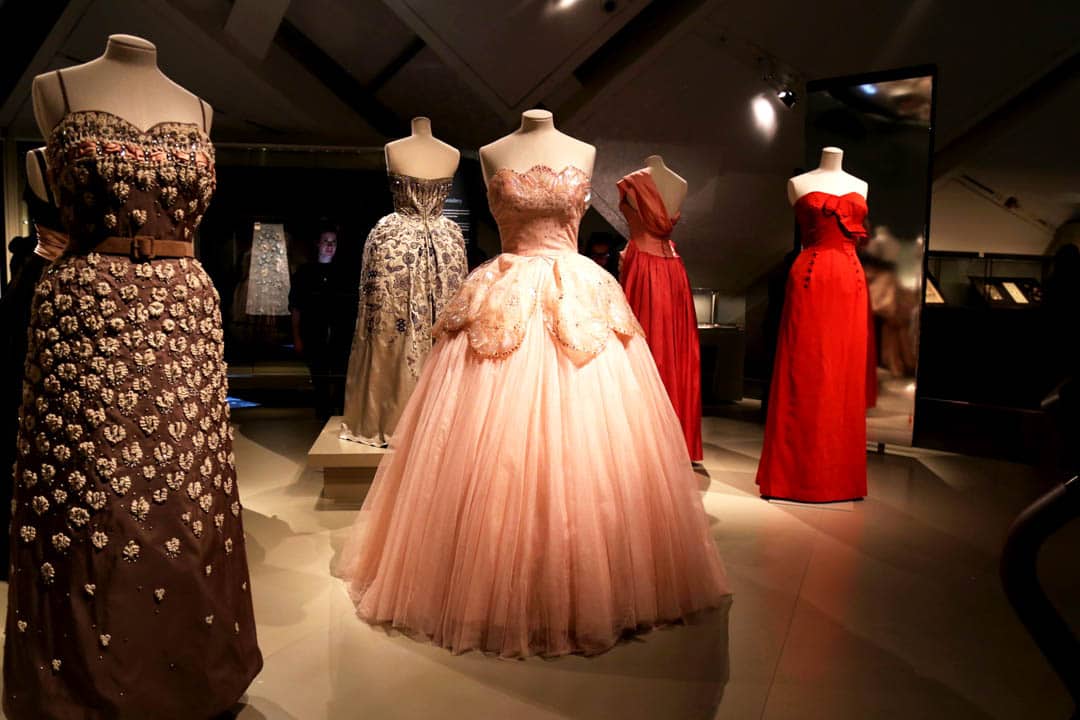The Royal Ontario Museum (ROM) is currently hosting an exhibit celebrating Christian Dior’s 70th anniversary, presented by Holt Renfrew. Featuring pieces from the first decade of Dior’s legacy, the apparel displayed ranges from 1947–1957, reflecting the climate of the aftermath of World War II.
The exhibit, a must-see for fashion aficionados, has a nostalgic Torontonian feel; the 40 garments featured were donated by Toronto socialites.
Dior revised the knee-length skirts and masculine cuts of wartime for a fresh postbellum femininity. He highlighted the female silhouette with willowy waistlines and accented bosoms, full skirts and soft, frilly details. According to Dior, this was “a look of peace” that reflected the postwar feminist feeling by celebrating the female form.
Despite Dior’s modernity, his construction of clothing harkened back to older methods that were beginning to become obsolete in the mid-twentieth century. A believer in handmade work over mass production, he revitalized dying industries and enlivened his clothing with careful craftsmanship and stellar quality.
Dior admitted that his “return to long-forgotten techniques raised a host of difficulties,” but nevertheless insisted on reviving forgotten arts, such as that of boned corsetry, after it had fallen out of use after World War I.
The designer had also commented on the importance of constructing dresses to compliment the female figure. “I wanted my dresses to be constructed like buildings, moulded to the curves of the female form, stylizing its shape.”
His cocktail dresses were heavily corseted, giving the torso a concave quality. The myriad hooks and eyes used to pin the bodice in place ensured that the female form would be seen in its fullness, the only the drawback being that women would require help dressing.
Another art that had all but disappeared after World War I was passementerie, the hand-weaving of braided, lace, and velvet ribbons.
Despite the ease of factory production, Dior was set on resurrecting this artistry, preserving the beauty of ribbonry in carefully designed and crafted detail, a sentiment echoed once again in his insistence on hand-embroidered fabric.
The House of Dior committed to historically favoured methods of dressmaking and amalgamated the creative insight of various top designers and craftspeople.
Dior’s desire for excellent fashion extended beyond only the upper classes, however, offering haute couture at a relatively affordable price by using inexpensive materials like glass and artificial pearls in jewellery, as well as sacrificing material so resources could be funneled into high quality manufacturing.
The pieces intended for working women are just as alluring as the evening gowns. These included two-piece suits with flattering waistlines and long coats, accented with buttons and a belt to frame the female silhouette with both grace and professional poise.
The exhibit is exquisite to behold. The embroidered fabrics, sparkly detailing, masses of tulle, and floor length voluminous skirts on display would make any fashion addict swoon.
The Christian Dior exhibit at the Royal Ontario Museum runs until April 8.


